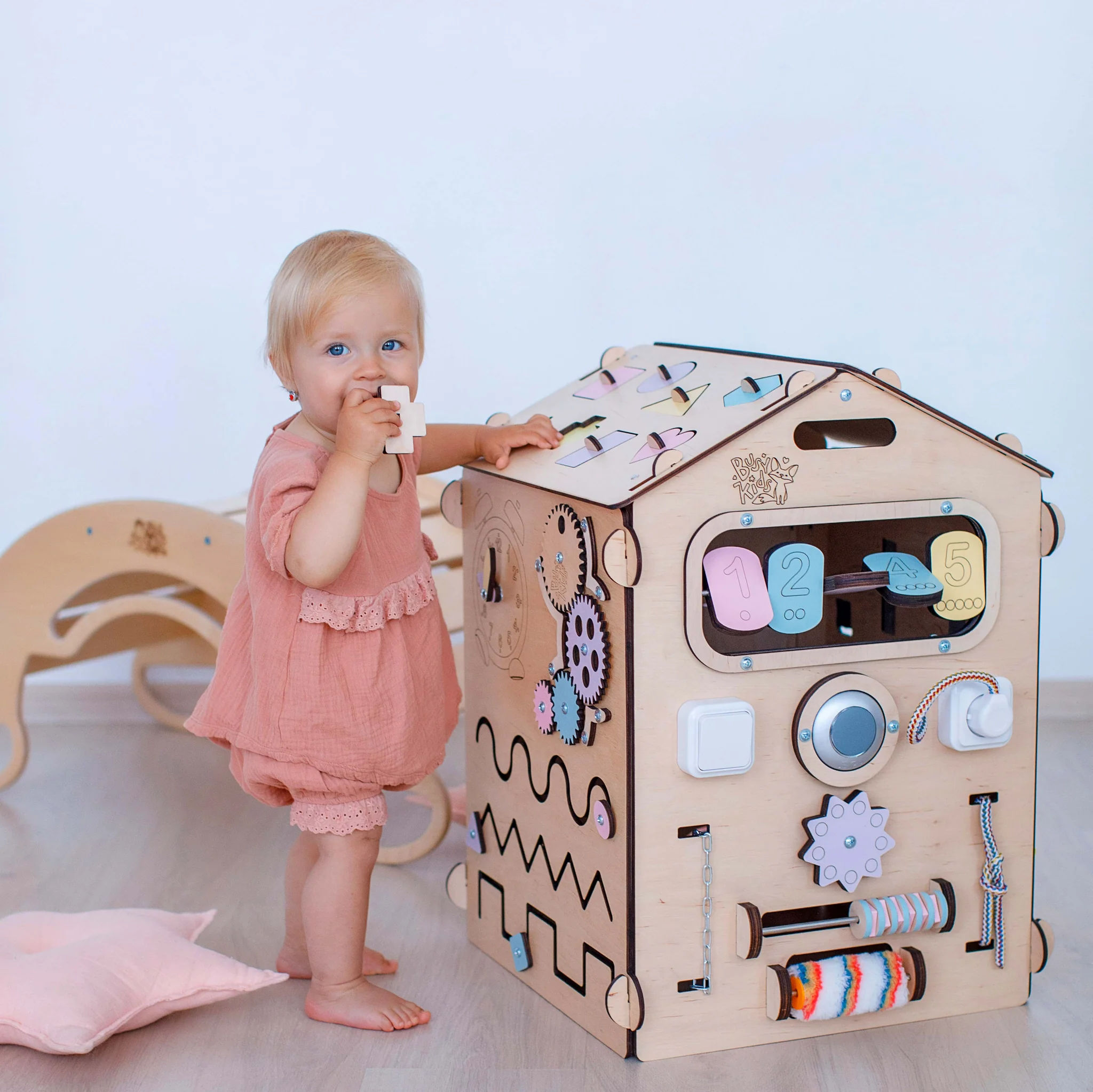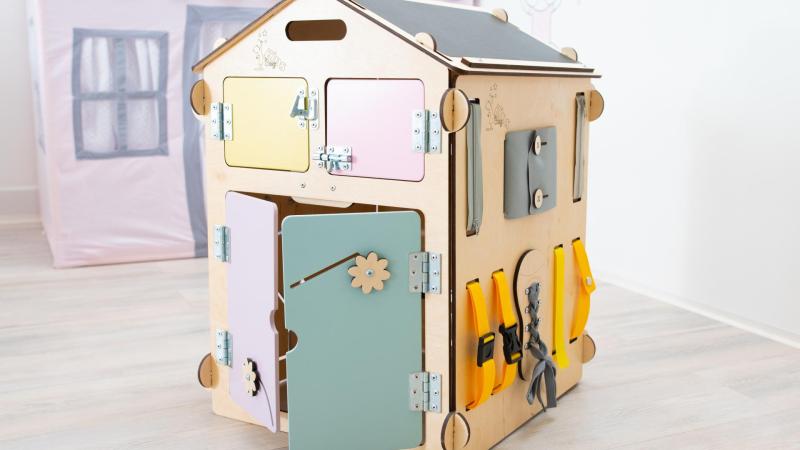Blog
Unlock Benefits of Having an Activity Board House
An activity board house is not just a playful space for children; it represents a fundamental shift in how we can encourage early childhood development through creative play. Activity boards combine learning with fun, allowing children to explore their skills while gaining essential cognitive and motor abilities. As they engage with various tasks and challenges presented by the activity board, children develop independence, problem-solving skills, and a sense of achievement that comes from mastering new activities.
In this article, we will delve into the numerous benefits of having an activity board house, exploring its impact on child development, creativity, social interaction, and more. We will also look at how these boards can be integrated into the home environment, making them an invaluable resource for parents and caregivers.

The Role of Activity Boards in Early Childhood Development
Activity boards serve as vibrant hubs of engagement, stimulating children’s senses and encouraging active participation. They provide hands-on experiences that are crucial during the formative years of development.
Sensory Exploration
At the core of an activity board house lies sensory exploration. From textured panels to musical elements, these boards offer a plethora of sensory experiences. Children can touch, hear, see, and even smell certain components, fostering an environment where curiosity thrives.
Sensory play is vital for young children’s brain development. Engaging with different textures—such as smooth wood, soft fabric, or bumpy surfaces—helps improve tactile discrimination. These experiences allow children to make sense of the world around them, leading to increased cognitive functioning and emotional well-being.
Additionally, sensory play helps develop fine motor skills. As children grasp, pull, push, and manipulate various objects on the activity board, they strengthen the small muscles in their hands. This skill-building is essential for tasks such as writing, buttoning clothes, and using utensils.
Cognitive Skill Development
Activity boards are not only delightful but also educational. Each component on the board presents a unique challenge that promotes critical thinking and problem-solving skills. For instance, puzzles and latches require children to strategize and figure out how to navigate various components.
Engaging in structured play encourages children to ask questions and seek solutions, which are foundational elements of cognitive development. As they tackle challenges, they learn about cause and effect, logical reasoning, and spatial awareness. These cognitive skills form the bedrock of later academic success, making activity boards a wise investment in a child’s future learning.
Moreover, incorporating educational themes—such as counting, colors, or letters—into the design of an activity board can further enhance learning outcomes. By connecting play with education, children are more likely to retain information and develop a love for learning.
Social Skills Enhancement
Another profound benefit of having an activity board house is the promotion of social skills. When children play collaboratively on an activity board, they learn important lessons about sharing, cooperation, and communication.
As kids take turns engaging with different parts of the board, they practice patience and negotiation. Conversations spark naturally as children discuss strategies or celebrate each other’s successes. These interactions nurture emotional intelligence and prepare children for future social dynamics.
Parents can also participate in the activity board experience, creating moments for bonding and connection. When caregivers guide their children through challenges on the board, it fosters trust and reinforces the idea that learning can be a joyful shared endeavor.
>>>Read more: Teach Your Child Responsibility and Boost Confidence with this Simple Daily Task: Ironing
Designing an Activity Board House for Maximum Engagement
Creating an effective activity board house requires thoughtful design and consideration of your child’s interests. An engaging activity board should encompass diverse elements that cater to various developmental areas.
Choosing the Right Components
Selecting the right components is crucial when designing an activity board. Consider incorporating a mix of sensory, cognitive, and motor skills elements to create a balanced learning experience.
For sensory exploration, think about including items like mirrors, bells, or crinkly fabrics. Each element should invite curiosity and exploration, allowing children to experiment with sounds and textures.
For cognitive challenges, consider puzzles, matching games, or color recognition tasks. Interactive elements that require critical thinking will stimulate your child’s mind while providing hours of entertainment.
Finally, don’t overlook the importance of gross and fine motor skills. Adding things like knobs, latches, and buttons will encourage hand-eye coordination and dexterity.
Personalizing the Activity Board House
Every child is unique, and personalizing the activity board to fit their interests can significantly enhance engagement. Pay attention to what captivates your child’s attention, whether it’s animals, vehicles, or nature.
You might include thematic elements like animal figures, car tracks, or nature scenes. Incorporating familiar themes will motivate your child to explore and interact meaningfully with the board, as they feel a sense of ownership over their play environment.
Customization does not stop at the thematic content. You can involve your child in the crafting process, allowing them to choose the colors, shapes, and materials used. This collaborative approach empowers children and instills pride in their space, leading to deeper engagement.

Maintenance and Safety Considerations
Safety is paramount when designing an activity board house. Ensure every component is securely attached and free from sharp edges or small parts that could pose choking hazards. Regular maintenance checks are vital to keep the board in good condition and safe for your child.
Moreover, consider the materials used in the activity board. Opt for non-toxic, durable materials that can withstand wear and tear. Natural wood is often a favorite choice due to its aesthetic appeal and sturdiness, but always check for finishes that are child-safe.
Lastly, teaching children about safety while playing is equally important. Encourage them to use the activity board appropriately and explain any potential risks associated with specific components. This lesson in responsibility lays the groundwork for safe play in broader contexts.
The Psychological Benefits of Play through Activity Boards
Play is not just a pastime; it is a pivotal aspect of psychological development. An activity board house provides a nurturing environment that aligns with children’s innate need for exploration and creativity.
>>>Buy now: Cute Busy Board For Girls
Boosting Self-Esteem and Confidence
Children thrive on accomplishment, and successfully navigating challenges presented by an activity board leads to feelings of achievement. Each completed task builds self-esteem, reinforcing the belief that they can tackle challenges head-on.
When children master new skills, whether it’s unlocking a latch or completing a puzzle, they gain confidence in their abilities. This newfound self-assurance can carry over into other areas of life, encouraging children to embrace challenges rather than shy away from them.
Additionally, positive reinforcement from caregivers plays a significant role in boosting self-esteem. Praising efforts and celebrating achievements encourages a growth mindset, inspiring children to continue learning and exploring.
Fostering Creativity and Imagination
The flexibility of an activity board allows children to engage in imaginative play. While some components may have specific functions, many can be used in various creative ways, sparking limitless possibilities.
Encouraging children to invent their games or storylines adds another layer of engagement. For example, they might pretend one side of the board is a zoo while another is a race track, promoting storytelling and role-play. This kind of imaginative involvement nurtures creativity, which is essential for problem-solving and innovative thinking later in life.
Moreover, allowing children to express their ideas and designs fosters a sense of ownership over their play. When they feel empowered to create and manipulate their environment, they are more likely to engage fully and enthusiastically.
Building Resilience through Play
Navigating challenges on the activity board teaches children resilience—the ability to bounce back from setbacks and persist in the face of difficulties. When faced with a daunting task, children learn that trial and error is part of the learning process.
This resilience is cultivated through repetition and practice. When children encounter obstacles, and eventually overcome them, they understand that challenges are surmountable. This mindset will serve them well throughout their lives, equipping them with the tools to confront adversity with determination.
Furthermore, discussing failures openly within the context of play normalizes setbacks and reframes them as valuable learning experiences. Parents can model resilience by sharing their own experiences, demonstrating that perseverance is key to overcoming challenges.
Integrating Activity Boards into Daily Life
While the stand-alone benefits of an activity board house are substantial, integrating them seamlessly into daily life can enhance their impact on child development.
Creating Structured Playtime
Establishing regular playtime routines around the activity board can maximize its benefits. Designate specific times for focused play, ensuring that children know they have dedicated moments to explore and interact with the board.
Structured playtime encourages routine, which is essential for young children. Familiarity with schedule promotes a sense of security and helps children anticipate the next activity. This predictability allows them to engage more deeply during playtime.
During these structured sessions, consider guiding your child through various activities on the board, introducing new challenges and themes. Facilitate discussions about what they’re experiencing, further enhancing cognitive engagement and strengthening your bond.
Collaboration with Other Activities
Pairing activity board play with other learning opportunities can create a holistic educational experience. For example, you could integrate storytelling or music by pairing them with corresponding activities on the board.
If your child loves animals, you can read stories about animals while engaging with animal-themed elements on the board. This cross-disciplinary approach enriches learning and creates memorable experiences that intertwine literature and play.
Engaging with your child in diverse activities stimulates curiosity and fosters a love of learning that transcends the activity board’s physical confines. It transforms play into an enriching experience that extends beyond mere amusement.
Encouraging Independent Play
While cooperative play is essential, fostering independent play also holds significant importance. An activity board house provides an excellent opportunity for children to explore independently, developing autonomy and self-direction.
Encourage your child to engage with the board solo, allowing them the freedom to choose which components to interact with. This degree of autonomy promotes decision-making skills and nurtures self-confidence, paving the way for independent problem-solving capabilities.
To support independent play, ensure the activity board is accessible and inviting. You want it to be a loved space that draws your child in, instilling a desire to explore and learn on their terms.

Conclusion
The multifaceted benefits of having an activity board house extend far beyond mere entertainment. Through sensory stimulation, cognitive engagement, social interaction, and psychological growth, activity boards provide a platform for comprehensive development.
By thoughtfully designing an activity board and integrating it into daily routines, parents can cultivate a rich learning environment that nurtures curiosity, creativity, and resilience. As children engage with the various components of the activity board, they embark on a journey of discovery that prepares them for future challenges in both learning and life.
Ultimately, investing in an activity board is an investment in a child’s holistic development—a commitment to fostering skills that will last a lifetime.
